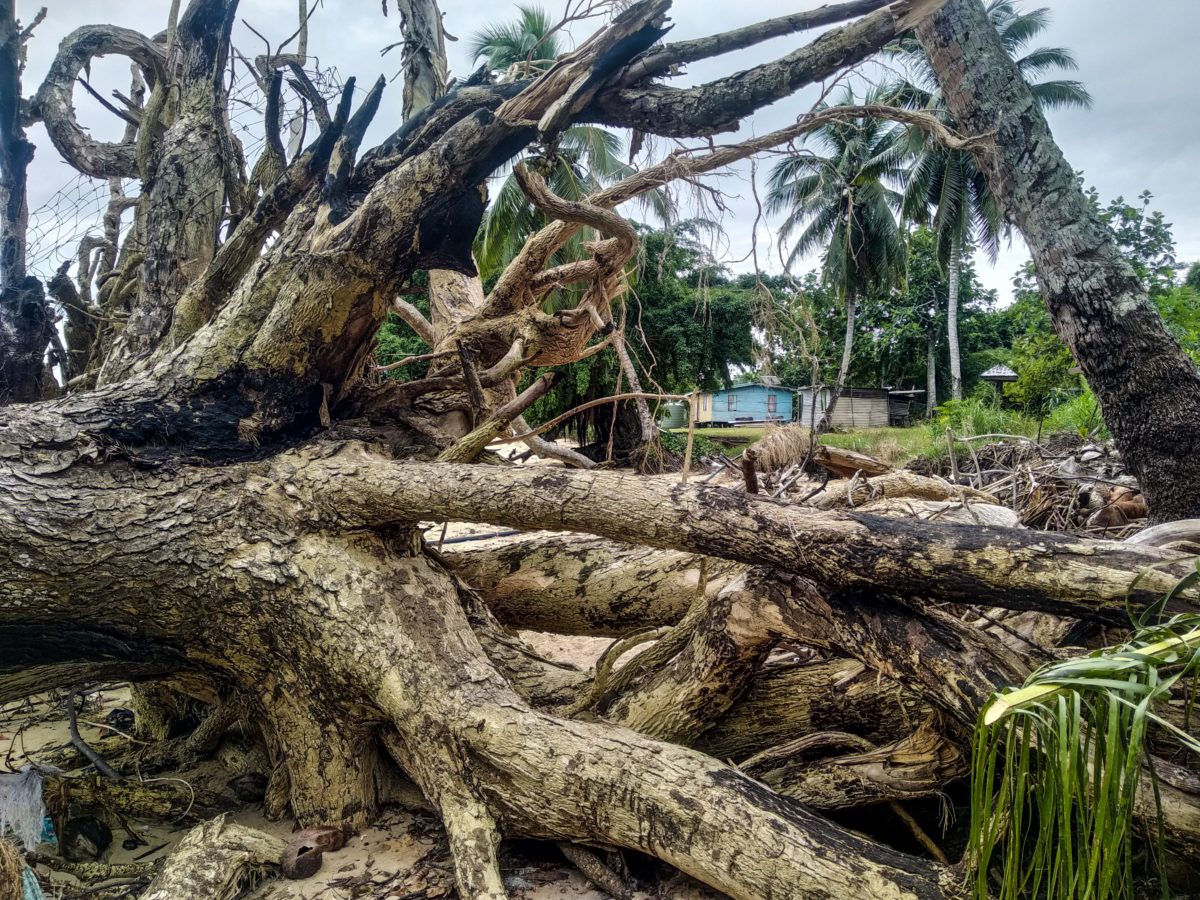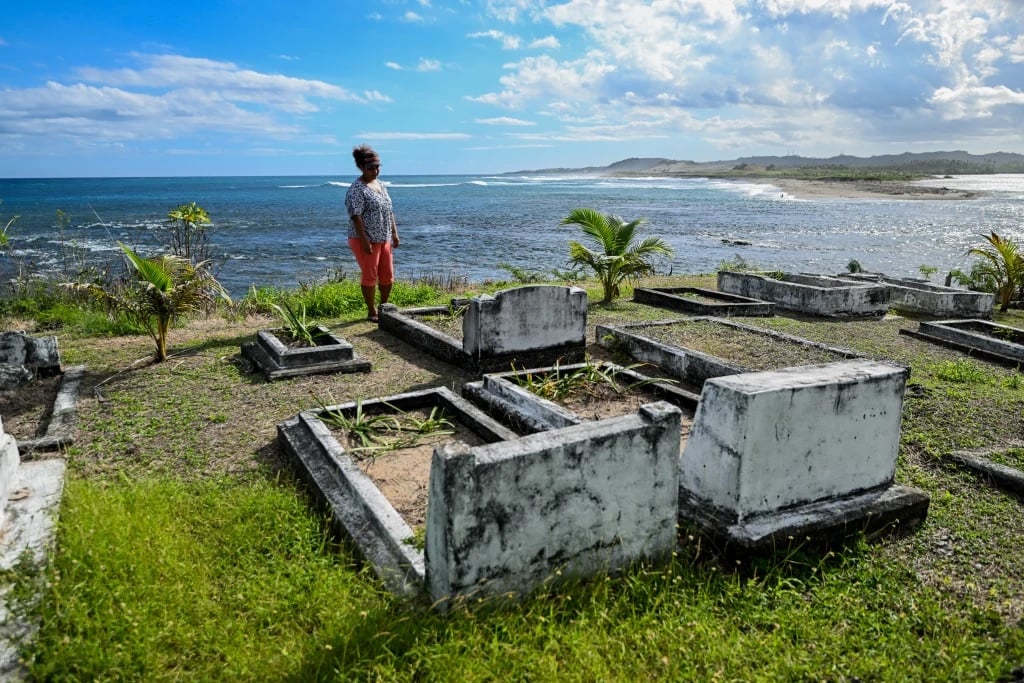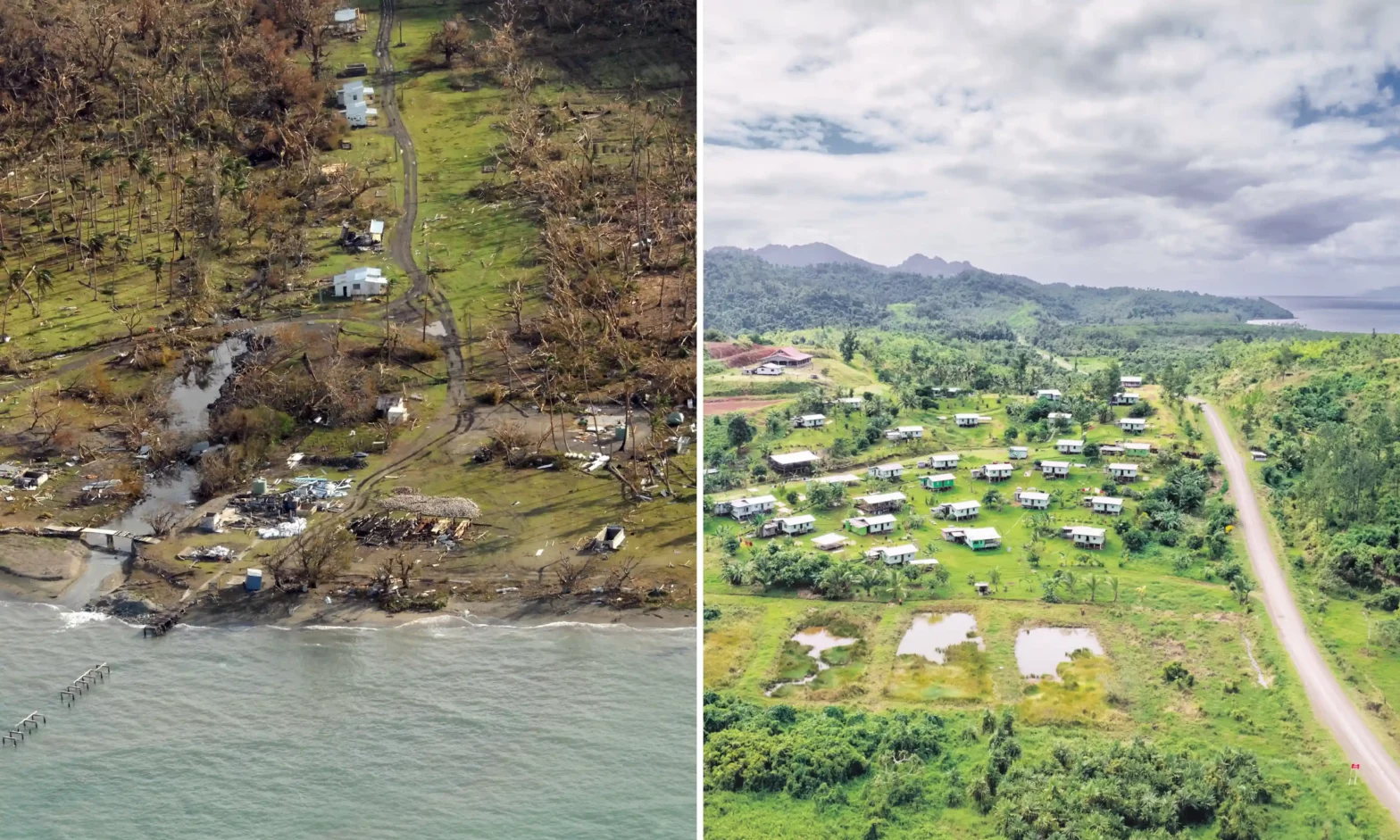Talk of relocation has created dilemmas for many Fiji residents due to financial constraints and deep ties to the land
Fiji is among the Pacific Island countries attempting to mitigate the devastating effects of sea-level rise as a result of climate change, with 47 settlements in the country currently identified as high-risk areas.
The country’s Minister for Environment and Waterways, Dr. Mahendra Reddy, said the communities identified by his ministry’s Climate Change Unit last year would just be the tip of the iceberg.
“Sea-level rise is faster than previously believed and could exceed one metre by the end of the century unless global emissions are reduced,” said Stefan Rahmstorf Potsdam of the Institute for Climate Impact Research in Germany, referring to a survey of more than 100 climate change experts.
“Based on new knowledge of climate sensitivity and polar ice melt, the experts say coastal cities should prepare for an impact that will hit sooner than predicted by the United Nations and could reach as high as five metres by 2300,” he added.
Bringing the scope closer to home, a recent study conducted by a group of Japanese researchers and the South Pacific Regional Environmental Program found that in Tonga, Fiji, Samoa, and Tuvalu, the primary impacts of sea level rise are, “increased risk of inundation and coastal flooding, exacerbation of erosion, saltwater intrusion into rivers and underground aquifers, and changes in sediment deposition patterns.”
Yet the researchers acknowledged that a lack of data made it difficult to make more exact predictions of the specific vulnerabilities facing the South Pacific.
In the absence of knowing just how bad things could get, relocation has been floated by officials as one of the main solutions for coastal communities threatened by rising seas and increasingly severe weather.
Speaking during last year’s COP 23 meeting in Bonn, Germany, Fiji’s Prime Minister Voreqe Bainimarama said relocation was an option his government would advocate if needed, despite the inherent difficulties.
“Relocation is a complex process and can be traumatic for those involved,” he said. “It is not just a case of economics and physical structures; there are a number of complexities, non-tangible aspects associated with relocation, which can include challenges to identity, as well as various psychological, social, emotional and cultural damages.”
Among the challenges with relocation are financial constraints and customary obligations that tie people to their current village sites. Then there is, perhaps, the strongest bond; the sentimental value people have to their ancestral land.
Kavewa Island
Descended from seafarers who had occupied the island of Kavewa off the Northern Coast of Vanua Levu (the second largest island in the Fiji), its present inhabitants say relocating is something they do not intend to do in the near future.
Even though villagers have witnessed the effect of sea level rise during many storms, they are praying for a miracle to keep them in their village because of their deep connection with their yavu, or traditional site of origin.
Over the years, villagers have witnessed the thinning coastal line that has brought storm waves closer to their doorstep and seen large trees uprooted by storm waters deposited along the village’s waterfront.
As 56- year- old housewife Emele Diwaqa shares, “I am frightened of the day when the sea will claim our house since we are just a step away from the sea, which has claimed most of our front yard.”
With a population of less than 300 people and a land area of 19.32 square kilometres, the island is a tiny dot when compared to neighbouring Vanua Levu, which has a land area of 5,587.1 square kilometres and hosts a population of 135,961 people.
In their years of existence on the island, the people of Kavewa say that their elders had never been threatened by the sea, which has instead sustained them.
In the last 26 years, however, islanders have noticed a steady rise in sea level that has claimed 200 kilometres of coatline during raging currents initiated by, storms, king tides and cyclones.
Eighty five year old Sitiveni Masiyadre, the eldest villager on the island, says he remembers a time when the village green extended further out from where the current low tide mark sits. Much of it has now vanished, with the village green being reduced to the size of a backyard, he added.
There is a lack of research measuring the effects of sea level rise on the island, but Mr. Masiyadre predicts that with the way things are going the current village site may be fully submerged within the next 20 years.
And despite directives from the government and their paramount chief, Tui Macuata, Ratu Wiliame Katonivere for people to relocate, Mr. Masiyadre said they found it difficult to do so because the current site had traditional and sentimental value.
“We have elders buried at the current village site and for many of us we have our yavu or traditional sites for our clan which ties us to this place,” he said.
“Most of our people have customary obligations that connect them to the current village site and if we move, we lose our heritage.”
Mr. Masiyadre’s sentiments were shared by 75-year-old matriarch, Nanise Tabega. She said the history and stories of her people had their origins in the current village site making it of sentimental value to them.
“Shifting our homes from here is like wrenching our souls from the very grounds that carry so much about us,” she said.
“When we talk about our origins we refer to the foundations of our ancestors’ homes which are our yavu and it exists here in this village and nowhere else on the island.”
“At the moment we are trying our very best to mitigate in whatever way we can the effects of sea level rise because our only adaptation option is to move inland. An option that we are not considering unless things get worse.”
Since the island does not have any water source, people rely on a desalination plant located near the sea that continues to face ongoing damage during storms.
The grandmother of 16 children said, “At this age it is difficult to move further inland because we get farther away from our only water source, therefore moving would only worsen things for the older generation when our movement is limited.”
“In the past, we had to carry big pots to get water from the sea in times of drought, which was then boiled and used for drinking. Having no desalination plant we must revert to this tedious work which we cannot do at this age.”
To date, the government has not outlined a plan to address these concerns.
Torn Between Traditional Duties and the Encroaching Ocean
Off the southeast coast of Vanua Levu sits Vunisavisavi, a village which is situated below sea level.
This is the traditional home of the Tui Cakau, who is the paramount chief of Cakaudrove province.
While explaining why it was difficult for villagers to move despite the encroaching ocean, Vunisavisavi elder Marica Kuita said, “We are the keepers of these ancestral grounds and these lands belong to us as my elders were asked many years ago to keep this place.”
“We cannot move because our traditional obligation is to the safekeeping of this traditional yavu and for this reason many of us still remain here even though some of our young ones have relocated their homes,” she said.
Time – and a rapidly-changing environment – has not been kind to Vunisavisavi, as rising sea levels, coastal erosion and recent extreme weather conditions have left their mark around the village.
Prime Minister Bainimarama recently asked villagers to move to ensure their safety during a talanoa session at Vunisavisavi Village.
Poverty a hindrance to relocation
In the fast-growing squatter settlement of Veisari outside Fiji’s capital Suva, residents like single mother Vitalina Duvuduvukula live in fear that her home could collapse on her and her five children any day.
Since they moved to the area two years ago in search of better opportunities, she said they noticed the encroaching tides claimed a huge portion of land where their house sits. Ms. Duvuduvukula said their home was constantly flooded with seawater during high tides because they are situated on low-lying land.
“We made a pact with landowners in this area and gave them some money to build on their land, therefore we are not eligible for any official support because we are not officially recognised as a settlement and nor has any non-governmental organisation approached us for assistance,” she said.
After two years of tidal onslaught and being exposed to the elements, she said a few timber posts which held up their home began to crumble away, causing the roof of the house to cave inwards.
Because she is unemployed, Ms. Duvuduvukula said her family relied on her eldest daughter who was working as an electrician in Suva.
“I am praying that we get money or support so that we can refurbish the roof of our house before it falls on us,” the 50-year-old said.
“We moved here knowing that the area was often submerged by tidal waters but we could not do much because we had chosen to move closer to the city to provide our children with a brighter future. Our families normally send children to stay with relatives but we did not want to do that because in most cases they are left to fend for themselves and are often unsupervised.”
Ms. Duvuduvukula’s story is similar to those of many residents that still live in the area despite calls from authorities to relocate.
In June this year, Environment Minister Dr. Reddy called on communities in coastal areas to move if they found the need to and not await government assistance as it did not yet have an official stance on relocation.
Speaking during the World Environment Day Celebrations he said, “People needed to take the first step and move when the need arose as Government assistance would take time to reach them considering the number of communities it looked after”.
He noted that since 1993 Fiji has recorded an average sea level increase of 6 millimetres per year.
At that rate, he said, any form of intervention was required to keep communities safe.
“It is sad that the “rising tides” are threatening the existence of coastal communities, but the good news is that the government is committed to ensuring the safety of our coastal communities, either through relocation or through the provision of coastal protection measures,” Dr. Reddy said.
Recently, the government has begun implementing coastal protection measures, such as the construction of seawalls and planting of mangroves in high-risk areas that have been badly affected by rising sea levels.
While Fiji still does not have an official policy on relocation it launched its planned relocation guidelines in 2018 to assist and guide relocation efforts at the local level.
The guidelines serve to demonstrate the Fijian Government’s commitment to effectively respond to the need for relocation related to climate change, drawing from the latest developments in the area of human mobility, the latest scientific findings, and assessments and studies carried out in the country.
Government anticipates that the guidelines will also accelerate Fiji’s progress in meeting its Sustainable Development Goals and other national, regional and global commitments.
Of the newly identified 47 high risk areas in need of relocation none has been relocated officially.
This story was made possible with the support of Earth Journalism Network




